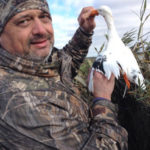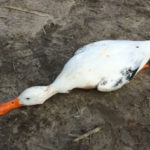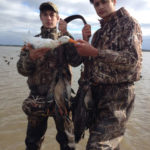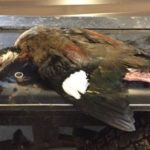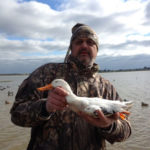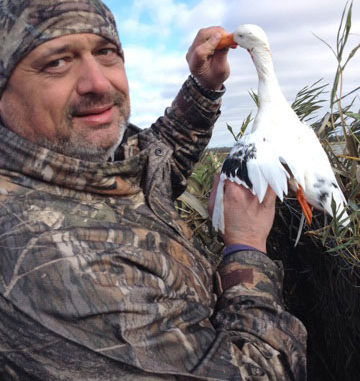
Bergeron shoots rare specimen on Jan. 9 in Ebenezer
Shane Bergeron’s duck season got off to a rough start last fall, but wrapped up with a bang in January when he shot a startlingly white leucistic spoonbill over a rice field near Ebenezer in Acadia Parish.
“We got a pit blind, but we were about a week too late to sink it because all the fields were flooded, so my two boys were disappointed,” said Bergeron, 46, of Rayne. “But what we did was make a little makeshift blind on top of the levee.
“And we ended up having a really good duck season. We killed 300 birds out that little blind.”
But it was one of the last birds shot that Bergeron will remember the most.
Along with his youngest son Caleb, 15, and Alex Arceneaux, 14, Bergeron and the boys enjoyed a great hunt in perfect conditions on Saturday, Jan. 9 – strong north winds with temperatures in the 50s.
“It was unbelievable. It was the day after that cold front and we had ducks everywhere. I was basically just letting them shoot. They were laughing and cutting up, and they were banging them up,” Bergeon said. “We finished a few short of the limit, and we were getting ready to leave and we started to stand up and pack when we see one single coming in.
“So I told them to get down, and I shot it and it fell. I didn’t even know it was a piebald at that point. It looked gray-black in the sky. When I shot it and it hit the water, it was belly down and you could see it was white. We just started freaking out.”
The white spoonie came in about 9:50, and Bergeron said he shot it at about 40 yards on the outer edges of his decoys.
“I tell you what, if we had killed our limit, we’d have never seen that duck because we’d have left,” he said. “It was dedicated – it cupped in from the south and it was coming.”
The bird is solid white, except for a few small patches of blue and green on its wings. But its eyes are yellow and not pink, Bergeron said.
“That is an extremely cool looking bird,” said Larry Reynolds, waterfowl study leader for the Louisiana Department of Wildlife and Fisheries.
Reynolds said the bird appears to be leucistic, a condition in which there is partial loss of pigmentation in an animal, resulting in patchy coloration. It is caused by a reduction in multiple types of pigment, unlike albinism which is caused by a lack of melanin.
“Leucistic just means there is whiteness where there shouldn’t be whiteness in those birds,” Reynolds said. “Is this spoonie a hybrid with a Pekin duck? Probably not. It probably just has some leucism. That’s what I think, but this isn’t my area of expertise.”
He suspects the bird is a hen, but couldn’t tell for sure without personally examining the duck.
“It appears to be a hen just because of the color of the bill,” Reynolds said. “But with all that white on there, I can’t really tell with the plumage.”
Paul Dickson, a Shreveport conservationist and director of the Pinola Conservancy, reviewed pictures of the bird and said in an email that he was surprised the bright white bird lived as long as it did.
“It (a white mutation) is rare to see in a wild duck in the fall, because the very few that are hatched that way usually don’t live until fall,” Dickson wrote.
The leucistic spoonie wasn’t the only rare bird taken over the Acadia Parish rice field — Bergeron’s oldest son Dylan, 19, also shot a banded ringed teal at the end of the first split.
Not too shabby a haul for a “makeshift blind” on the levee.
“Everybody calls it the Aflac duck,” Bergeron said, describing the white spoonie. “It’s a beautiful duck. We’re going to pedestal mount that one and put him on top of the snack bar so you can see all the way around him.”
